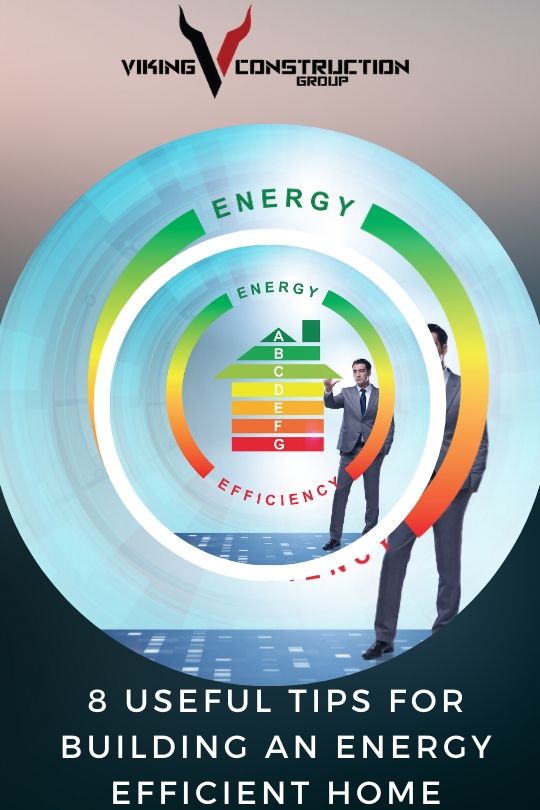8 Useful Tips for Building an Energy Efficient Home- Energy Efficiency is a key consideration when building any home. With some simple design elements, you can build a home that’s not just comfortable and attractive but also efficient. The cost of energy is rising and will increase in the future. By using an integrated plan homeowners can save a lot over the lifetime of their home. Here are some tips to help you build an energy-efficient home.
There are many different energy-saving applications you may want to consider when planning your home. Though most of those are likely to elevate your upfront cost there are government programs that may give incentives for energy-efficient elements. In most cases, the savings will far outweigh the initial investment.
Getting in early
Energy consumption is, naturally, important when you begin designing your energy-efficient home. From the start, it is important to acknowledge that changing the plan later in the process may be more costly than it’s worth. Check with a planning department of the local authorities, as they usually require an energy efficiency plan when you submit your application.
Orientating
The first consideration for energy-efficient homes is the location in the orientation of the building. You want to maximize the use of passive solar gain yet reduce the heat gain of hot summer months. A little fine-tuning of directional and design aspects can make the difference when it comes to enjoying the summer sun without overheating your home. Attention to the design of passive solar gain helps with heating in the winter and cooling in the summer.
Nature’s assist
Specifically engineering the landscape for the building can also have a great positive effect on energy efficiency. A good example is planting deciduous trees on the sunny side of the house, this gives shade in the summer helping keep the house cool. Also, in the winter the deciduous trees lose their leaves allowing the sun to warm the house.
Windows selection
Critical in your design is selecting the best windows for the climate and direction, low U-value frames and Low-E glass as appropriate. For example, higher altitudes benefit from good UV rays throughout the year, excluding cold winters. When choosing your glass, keep in mind the level of privacy and comfort you want upon completion.
Airtightness
Attention to air-tightness of the house has a great effect on energy efficiency. Proper sealing, of joints, sills, ducts, doors and vents, is important to guard against heat leaks. Some areas, such as, bathrooms in utility rooms require venting, to answer the need for energy efficiency many ventilation systems now include heat recovery technology.
Heating design
The cost of heating a house usually makes up more than 50 percent of the energy expenses. An essential consideration in the design is choosing the most efficient heating system as this will save you a lot in the long run. Also, consider more sophisticated controls such as those that make adjustments based on the weather conditions, automating the heating system.
Lights
Another key factor for designing your home’s Energy Efficiency is lighting. While fluorescent lighting has served well, LED lighting is the technology of the future. The technology is significantly progressed in the last decade and can cut your energy cost by hundreds of dollars over 10 to 20 years before you need replacements. Among the quickest returns on investment, LEDs conveniently fit most light fixtures.
Insulating
Minimizing the loss of heat through elements such as walls and Floors is vital in designing an energy-efficient home. Designing components to minimize the U-Value and R-Value will provide a passive and long-lasting savings throughout the life of the home. Insulated concrete forms, thicker walls and roofs, to name a few, are worthy considerations for better insulation value. Polyurethane spray foam is also another good material that is becoming more widely used.
While there is extra effort in planning an energy-efficient home it’s easier than trying to retrofit your home later. Careful consideration of the climate, geographical location and orientation of the home, as well as, design elements within, will pay off in the long run. Energy efficiency should always be among the primary considerations in designing a home.
If you enjoyed this post, you might like these:
- How to Plan for a Major Remodel
- What’s the Difference Between a Remodel and a Renovation?
- 8 Ways to Personalize Your New Home
- How to Consider Pets in Your Home Renovation
- How to Integrate Outdoor Living into Your Home
- How High End Should We Go When Remodeling a Home to Sell
- How to Reduce Energy Bills with Carpet
- 5 Great Commercial Construction Interview Questions
